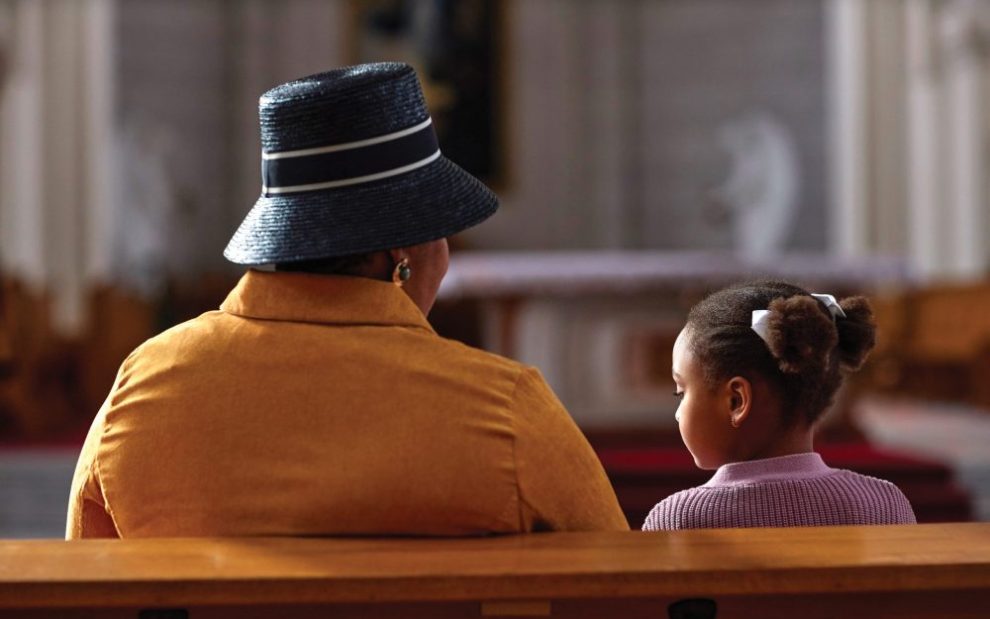Jesus’ crucifixion was brutal. There’s no way to overlook that fact. As Christians, we believe it was the pivotal moment in all human history. This means if we want to teach the next generation about the gospel, talking to children about Jesus’ death is important. Yet, how do we talk to children about such an upsetting truth in an age-appropriate way that also does not set them up to have false understandings of God? To invite them into a relationship with the crucified Lord who loves them.
Young children (ages 5–8)
Around the age of 5, my children began to ask questions about death and suffering. They were grappling with the permanence of death, even though they couldn’t yet abstract its meaning for their own lives. This age became the key period when my husband and I introduced to our kids the basic facts of the crucifixion and the resurrection. We told our children that even though Jesus knew he was going to die, he chose to carry his cross because he loves us so much. And most important, we told them the good news that because Jesus came back to life, we get to live forever, too.
Talking to children about the paschal mystery (that is, the passion, death, and resurrection of Christ) is delicate, but it doesn’t require extensive training. How we approach it should correspond to children’s psychological development, especially their understanding of death. We should also always prioritize their questions and thoughts over what we think they need to learn.
Sharing the personal reasons why Jesus’ death and resurrection matter to me was just as important as the basic facts. My kids were too young to understand theological theories of atonement or the consequences of the fall. But they could understand stories about people I love who have died, whom I hope to see again in heaven.
When talking to children about Jesus’ death, consider sharing your hopes for loved ones who have left this life. Or perhaps share—in a way a young child can understand—a moment you experienced God’s forgiveness. Whatever you say, make sure children see the connections between their own lives and the story of Jesus.
Middle grades (ages 9–12)
As children grow, their understanding of death also grows. They wonder how it will affect them in the future. They think more seriously about the loss of loved ones and their own deaths. As our kids began to ask deeper questions about mortality, my husband and I responded with equally deep discussions focused on the meaning of Jesus’ death.
During these years, when we read biblical stories with our children, we discussed how each story fit into the whole of Jesus’ life and ministry. We also talked about what the crucifixion means for each of our children individually in their relationship with God. In the process, we helped them connect Jesus’ story to the wider story of God’s love. Stories with strong Christian themes of death and resurrection—for example, The Lion, the Witch, and the Wardrobe, Harry Potter and the Deathly Hallows, and The Lord of the Rings—were especially helpful as discussion starters.
This middle period in kids’ lives is the time to introduce the personal meaning of the crucifixion. After their first reconciliation and communion, they have their own firsthand experiences of Jesus’ death and resurrection as fundamental components of their lives. Their participation in these sacraments can be starting points for you to share your own experiences of forgiveness, love, and grace through confession and the Eucharist.
Teenagers and beyond
Teenagers are particularly attuned to questions about death and the meaning of life. At this stage in their development, kids are forming their own identities, confronting existential realities, and looking for purpose. This is also the most crucial juncture of their faith development as they enter a more mature relationship with Jesus and direct their own faith journey into adulthood.
After 20 years of youth and pastoral ministry, I am still in awe of the profound wisdom young people bring to these discussions. One of my favorite moments in youth ministry came when I asked our teens to tell me what it means to them to say that Jesus died for them. Their answers almost brought me to tears.
Teenagers are asking the biggest questions, and we need to let them seek out their own answers, even as we offer our support. These years are when we can open the door to talk about the whole of the crucifixion: the brutality, the social and political reasons Jesus was killed, and the joyous audaciousness of claiming Jesus is God and he rose again.
Teens also need to explore what the crucifixion teaches about the mystery of suffering, grief, and solidarity with victims of injustice and oppression. This, too, is when your own personal story becomes even more essential. The authority teens grant us grows from our relationships with them; they will be more willing to accept what you tell them when you have their trust. For most teenagers, the stories of who Jesus is to you, as an individual, far outweigh even the Bible.
As you talk with them, you might ask them about times when they saw rebirth in their own lives or what they think it means to die to our old selves and rise anew.
As families and communities, we don’t ever have to stop talking about the meaning of the crucifixion. In my own young adult years, the continued guidance of my parents and other trusted adults was an anchor. The support and wisdom they shared with me were essential as I braved grief, confusion, doubt, and growth.
Young adults still have questions, thoughts, and insights about who Jesus is and what his death and resurrection mean for their lives. The older they are, the more injustice, suffering, and death will become regular fixtures in their lives. They will still need a listening ear as they make meaning from the joys and challenges of living. Continue to listen, ask questions, and share your own stories about how the paschal mystery gives meaning to life and why you continue to love the Lord in the midst of it all.
This article also appears in the March 2025 issue of U.S. Catholic (Vol. 90, No. 3, pages 43-44). Click here to subscribe to the magazine.
Image: iStock















Add comment